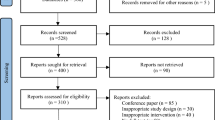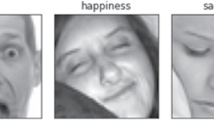Abstract
Previous research has achieved remarkable progress in Sign Language Recognition (SLR). However, for robust open-set SLR applications, it is necessary to solve signer-independent SLR. This paper proposes a novel adversarial multi-task deep learning (MTL) framework that can incorporate multiple modalities for isolated SLR. Employing the identity recognition task as the competition task to the target SLR task, the proposed model can effectively extract signer-independent features by deviating the optimization direction of the competitive task. Furthermore, the proposed adversarial MTL multi-modality framework can jointly incorporate positive and negative task learning with the target task. Combining multi-modality in the adversarial MTL, our model can extract robust signer-independent representation. We evaluate our method on multiple benchmark datasets from different sign languages. The experimental results demonstrate that the proposed adversarial MTL multi-modality model can effectively realize signer-independent SLR by compensation with relevant tasks and competition with irrelevant tasks.







Similar content being viewed by others
References
Abdulnabi AH, Wang G, Lu J, Jia K (2015) Multi-task cnn model for attribute prediction. IEEE Trans Multimed 17(11):1949– 1959
Adaloglou N, Chatzis T, Papastratis I, Stergioulas A, Papadopoulos GT, Zacharopoulou V, Xydopoulos GJ, Atzakas K, Papazachariou D, Daras P (2020) A comprehensive study on sign language recognition methods. arXiv:2007.12530
Adaloglou NM, Chatzis T, Papastratis I, Stergioulas A, Papadopoulos GT, Zacharopoulou V, Xydopoulos G, Antzakas K, Papazachariou D, none Daras P (2021) A comprehensive study on deep learning-based methods for sign language recognition. IEEE Trans Multimed
Adi Y, Zeghidour N, Collobert R, Usunier N, Liptchinsky V, Synnaeve G (2019) To reverse the gradient or not: an empirical comparison of adversarial and multi-task learning in speech recognition. In: ICASSP 2019-2019 IEEE International conference on acoustics, speech and signal processing (ICASSP), IEEE, pp 3742–3746
Cao Z, Hidalgo G, Simon T, Wei SE, Sheikh Y (2019) Openpose: realtime multi-person 2d pose estimation using part affinity fields. IEEE Trans Pattern Anal Mach Intell 43(1):172–186
Carreira J, Zisserman A (2017) Quo vadis, action recognition? a new model and the kinetics dataset. In: Proceedings of the IEEE conference on computer vision and pattern recognition, pp 6299–6308
Caruana R (1997) Multitask learning. Mach Learn 28(1):41–75
Cui F, Di H, Shen L, Ouchi K, Liu Z, Xu J (2021) Modeling semantic and emotional relationship in multi-turn emotional conversations using multi-task learning. Appl Intell, pp 1–11
Cui R, Liu H, Zhang C (2019) A deep neural framework for continuous sign language recognition by iterative training. IEEE Trans Multimed 21(7):1880–1891
Deng J, Cheng S, Xue N, Zhou Y, Zafeiriou S (2018) Uv-gan: Adversarial facial uv map completion for pose-invariant face recognition. In: Proceedings of the IEEE conference on computer vision and pattern recognition, pp 7093–7102
Du L, Ling H (2014) Exploiting competition relationship for robust visual recognition. In: Twenty-eighth AAAI conference on artificial intelligence
Escalera S, Baró X., Gonzalez J, Bautista MA, Madadi M, Reyes M, Ponce-López V, Escalante HJ, Shotton J, Guyon I (2014) Chalearn looking at people challenge 2014: Dataset and results. In: European conference on computer vision, Springer, pp 459– 473
Fang Y, Ma Z, Zhang Z, Zhang XY, Bai X, et al. (2017) Dynamic multi-task learning with convolutional neural network. In: IJCAI, pp 1668–1674
Fang Y, Xiao Z, Zhang W (2021) Multi-layer adversarial domain adaptation with feature joint distribution constraint. Neurocomputing 463:298–308
Fortun D, Bouthemy P, Kervrann C (2015) Optical flow modeling and computation: a survey. Comput Vis Image Underst 134:1–21
Ganin Y, Ustinova E, Ajakan H, Germain P, Larochelle H, Laviolette F, Marchand M, Lempitsky V (2016) Domain-adversarial training of neural networks. J Mach Learn Res 17(1):189–209
Goodfellow I, Pouget-Abadie J, Mirza M, Xu B, Warde-Farley D, Ozair S, Courville A, Bengio Y (2014) Generative adversarial nets. In: Advances in neural information processing systems, pp 2672–2680
Guo D, Zhou W, Li H, Wang M (2017) Online early-late fusion based on adaptive hmm for sign language recognition. ACM Transactions on Multimedia Computing, Communications, and Applications (TOMM) 14(1):1–18
Hara K, Kataoka H, Satoh Y (2018) Can spatiotemporal 3d cnns retrace the history of 2d cnns and imagenet?. In: Proceedings of the IEEE conference on Computer Vision and Pattern Recognition, pp 6546–6555
He K, Sun J (2015) Convolutional neural networks at constrained time cost. In: Proceedings of the IEEE conference on computer vision and pattern recognition, pp 5353–5360
Huang J, Zhou W, Li H, Li W (2018) Attention-based 3d-cnns for large-vocabulary sign language recognition. IEEE Trans Circuits Syst Video Technol 29(9):2822–2832
Ji S, Xu W, Yang M (2012) Yu, k.: 3d convolutional neural networks for human action recognition. IEEE Trans Pattern Anal Mach Intell 35(1):221–231
Jiang B, Zhou Z, Wang X, Tang J, Luo B (2020) cmsalgan: Rgb-d salient object detection with cross-view generative adversarial networks. IEEE Transactions on Multimedia
Koller O, Camgoz C, Ney H, Bowden R (2019) Weakly supervised learning with multi-stream cnn-lstm-hmms to discover sequential parallelism in sign language videos. IEEE transactions on pattern analysis and machine intelligence
Laptev I (2005) On space-time interest points. International Journal of Computer Vision 64 (2-3):107–123
Li Y, Ji B, Shi X, Zhang J, Kang B, Wang L (2020) Tea: Temporal excitation and aggregation for action recognition. In: Proceedings of the IEEE/CVF conference on computer vision and pattern recognition, pp 909–918
Liu H, Sun P, Zhang J, Wu S, Yu Z, Sun X (2020) Similarity-aware and variational deep adversarial learning for robust facial age estimation. IEEE Trans Multimed
Liu Y, Wei F, Shao J, Sheng L, Yan J, Wang X (2018) Exploring disentangled feature representation beyond face identification. In: Proceedings of the IEEE conference on computer vision and pattern recognition, pp 2080–2089
Meng Z, Li J, Chen Z, Zhao Y, Mazalov V, Gang Y, Juang BH (2018) Speaker-invariant training via adversarial learning. In: 2018 IEEE International conference on acoustics, speech and signal processing (ICASSP), IEEE, pp 5969–5973
Mullick K, Namboodiri AM (2017) Learning deep and compact models for gesture recognition. In: 2017 IEEE International conference on image processing (ICIP), IEEE, pp 3998–4002
Pu J, Zhou W, Li H (2019) Iterative alignment network for continuous sign language recognition. In: Proceedings of the IEEE conference on computer vision and pattern recognition, pp 4165–4174
Qiu Z, Yao T, Mei T (2017) Learning spatio-temporal representation with pseudo-3d residual networks. In: Proceedings of the IEEE international conference on computer vision, pp 5533–5541
Rastgoo R, Kiani K, Escalera S (2021) Sign language recognition: a deep survey. Expert Syst Appl 164(113):794
Romera-Paredes B, Argyriou A, Berthouze N, Pontil M (2012) Exploiting unrelated tasks in multi-task learning. In: International conference on artificial intelligence and statistics, pp 951–959
Shinohara Y (2016) Adversarial multi-task learning of deep neural networks for robust speech recognition. In: Interspeech, San Francisco, CA, USA, pp 2369–2372
Si C, Nie X, Wang W, Wang L, Tan T, Feng J (2020) Adversarial self-supervised learning for semi-supervised 3d action recognition. In: European conference on computer vision, Springer, pp 35–51
Song L, Zhang M, Wu X, He R (2018) Adversarial discriminative heterogeneous face recognition. In: Proceedings of the AAAI conference on artificial intelligence, vol 32
Sudhakaran S, Escalera S, Lanz O (2020) Gate-shift networks for video action recognition. In: Proceedings of the IEEE/CVF conference on computer vision and pattern recognition, pp 1102–1111
Tran D, Bourdev L, Fergus R, Torresani L, Paluri M (2015) Learning spatiotemporal features with 3d convolutional networks. In: Proceedings of the IEEE international conference on computer vision, pp 4489–4497
Tran D, Wang H, Torresani L, Ray J, LeCun Y, Paluri M (2018) A closer look at spatiotemporal convolutions for action recognition. In: Proceedings of the IEEE conference on Computer Vision and Pattern Recognition, pp 6450–6459
Tu G, Fu Y, Li B, Gao J, Jiang YG, Xue X (2019) A multi-task neural approach for emotion attribution, classification, and summarization. IEEE Transactions on Multimedia 22(1):148–159
Uppal H, Sepas-Moghaddam A, Greenspan M, Etemad A (2021) Teacher-student adversarial depth hallucination to improve face recognition. In: Proceedings of the IEEE/CVF international conference on computer vision (ICCV), pp 3671–3680
Wang C, Wang S, Liang G (2019) Identity-and pose-robust facial expression recognition through adversarial feature learning. In: Proceedings of the 27th ACM international conference on multimedia, pp 238–246
Wang H, Chai X, Chen X (2016) Sparse observation (so) alignment for sign language recognition. Neurocomputing 175:674–685
Wang H, Chai X, Zhou Y, Chen X (2015) Fast sign language recognition benefited from low rank approximation. In: 2015 11Th IEEE international conference and workshops on automatic face and gesture recognition (FG), vol 1, IEEE, pp 1–6
Wang H, Gong D, Li Z, Liu W (2019) Decorrelated adversarial learning for age-invariant face recognition
Wang H, Klaser A, Schmid C, Cheng-Lin L (2011) Action recognition by dense trajectories. In: 2011 IEEE Conference on computer vision and pattern recognition (CVPR), pp 3169– 3176
Wang L, Xiong Y, Wang Z, Qiao Y, Lin D, Tang X, Van Gool L (2016) Temporal segment networks: Towards good practices for deep action recognition. In: European conference on computer vision, Springer, pp 20–36
Wilcox S (2004) Cognitive iconicity: Conceptual spaces, meaning, and gesture in signed language. Cognitive Linguistics 15(2):119–147
Wu D, Chen J, Sharma N, Pan S, Long G, Blumenstein M (2019) Adversarial action data augmentation for similar gesture action recognition. In: 2019 International joint conference on neural networks (IJCNN), IEEE, pp 1–8
Wu D, Pigou L, Kindermans PJ, Le NDH, Shao L, Dambre J, Odobez JM (2016) Deep dynamic neural networks for multimodal gesture segmentation and recognition. IEEE Trans Pattern Anal Mach Intell 38(8):1583–1597
Xia X, Togneri R, Sohel F, Zhao Y, Huang D (2019) Multi-task learning for acoustic event detection using event and frame position information. IEEE Trans Multimed 22(3):569–578
Xu W, Li S, Lu Y (2021) Usr-mtl: an unsupervised sentence representation learning framework with multi-task learning. Appl Intell 51(6):3506–3521
Yang C, Xu Y, Shi J, Dai B, Zhou B (2020) Temporal pyramid network for action recognition. In: Proceedings of the IEEE/CVF conference on computer vision and pattern recognition, pp 591–600
Yang Y, Hospedales TM (2016) Trace norm regularised deep multi-task learning. arXiv:1606.04038
Zhang H, Hu Z, Qin W, Xu M, Wang M (2021) Adversarial co-distillation learning for image recognition. Pattern Recogn 111(107):659
Zhang J, Zhou W, Xie C, Pu J, Li H (2016) Chinese sign language recognition with adaptive hmm. In: 2016 IEEE International conference on multimedia and expo (ICME), IEEE, pp 1–6
Zhang Y, Yang Y, Zhou W, Wang H, Ouyang X (2021) Multi-city traffic flow forecasting via multi-task learning. Appl Intell, pp 1–19
Zhang Z, Luo P, Loy CC, Tang X (2014) Facial landmark detection by deep multi-task learning European conference on computer vision, Springer, pp 94–108
Zhang Z, Luo P, Loy CC, Tang X (2015) Learning deep representation for face alignment with auxiliary attributes. IEEE Trans Pattern Anal Mach Intell 38(5):918–930
Zhou H, Zhou W, Zhou Y, Li H (2020) Spatial-temporal multi-cue network for continuous sign language recognition. arXiv:2002.03187
Zhou J, Huang JX, Hu QV, He L (2020) Is position important? deep multi-task learning for aspect-based sentiment analysis. Appl Intell 50:3367–3378
Zhu X, Xu C, Hui L, Lu C, Tao D (2019) Approximated bilinear modules for temporal modeling. In: Proceedings of the IEEE international conference on computer vision, pp 3494–3503
Acknowledgements
The work is supported by the National Natural Science Foundation of China under Grant No.: 61976132, 61991411 and U1811461, and the Natural Science Foundation of Shanghai under Grant No.: 19ZR1419200. We appreciate the High Performance Computing Center of Shanghai University and Shanghai Engineering Research Center of Intelligent Computing System No.: 19DZ2252600 for providing the computing resources.
Author information
Authors and Affiliations
Corresponding author
Ethics declarations
Conflict of Interests
The authors declare that they have no conflict of interest.
Additional information
Publisher’s note
Springer Nature remains neutral with regard to jurisdictional claims in published maps and institutional affiliations.
Rights and permissions
About this article
Cite this article
Fang, Y., Xiao, Z., Cai, S. et al. Adversarial multi-task deep learning for signer-independent feature representation. Appl Intell 53, 4380–4392 (2023). https://doi.org/10.1007/s10489-022-03649-3
Accepted:
Published:
Issue Date:
DOI: https://doi.org/10.1007/s10489-022-03649-3




